Pufferfish or Porcupine fish? They both have distinct appearances, intriguing behaviors, and mysterious qualities which make them popular choices for aquarium enthusiasts. They also have notable differences that set them apart. In this comprehensive article, we will explore the similarities and differences between Pufferfish and Porcupine fish, providing valuable insights for hobbyists seeking to understand and care for these fascinating creatures.
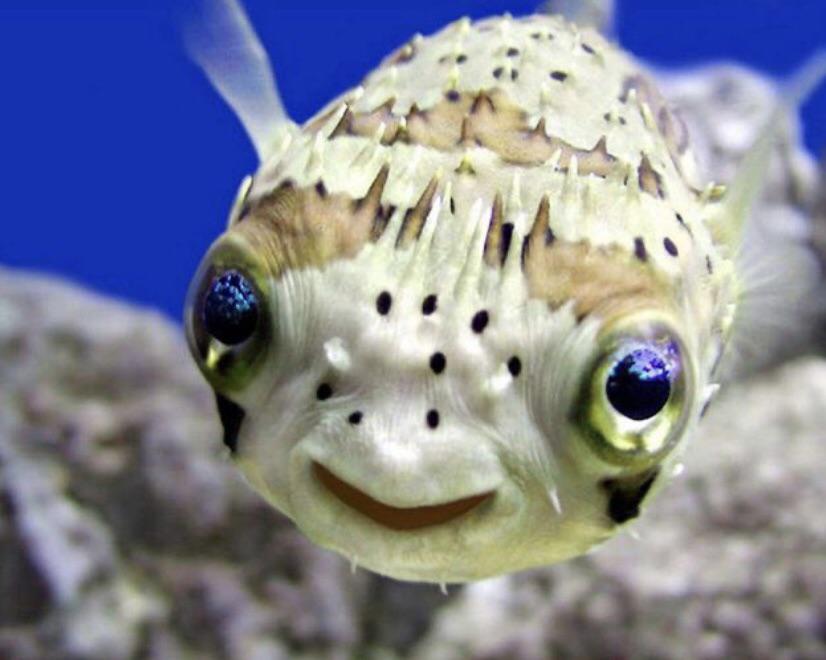
Introduction:
Pufferfish and Porcupine fish are among the most captivating creatures that have mesmerized the hobbyist within this vast and diverse world of aquatic life. Their unique appearances, fascinating behaviors, and enigmatic qualities make them popular choices for aquarium enthusiasts. Although these fish share some similarities, they also possess distinct traits that set them apart.
In this in-depth article, we will look into the similarities and differences between Pufferfish vs Porcupine fish, providing valuable insights for hobbyists looking to understand and care for these fascinating aquatic creatures
Key Differences in Features:
| Features | Puffer Fish | Porcupine Fish |
| Physical appearance | Typically smaller, rounder body shape | Often larger, elongated body shape |
| Spine | Internal spines that inflate when threatened | External spines covering the body surface |
| Tank requirements | Depends on species size, but typically smaller | Larger tank size often required due to larger size |
| Inflate Mechanism | Inflate their bodies by ingesting water or air | Inflate their bodies with water through gill plates |
| Family | Tetraodontidae | Diodontidae |
| Color | yellow, orange, green, and brown | Grey, brown, black, and white |
| Size | 1-24 inches | 6 inches to 3 feet |
Physical Appearances:
Pufferfish and porcupine fish are often mistaken because of their similar appearance and common ability to inflate their bodies when in danger.
Porcupine puffers are classified under the order Tetraodontiformes, described by their unique box-like bodies and rough, spiky exteriors. The puffer fish with spikes may not be noticeable at first glance as they are densely packed.
Nevertheless, there are some differences in their physical characteristics. Pufferfish usually have a more rounded body shape, whereas porcupine fish tend to be slightly elongated.
Furthermore, the arrangement of their spines differs, with puffer fish spines covering their entire bodies, while porcupine fish have larger, more noticeable spines concentrated on their backs and sides
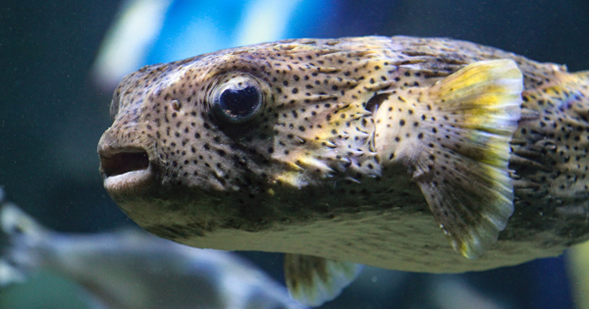
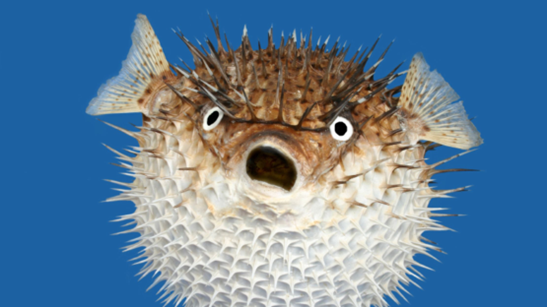
Origin
Pufferfish are found in diverse ecological niches across the globe, including freshwater, brackish, and marine environments. From the tropical waters of Asia to the subtropical regions of Africa and the Americas, these resilient creatures flourish in various environments such as coral reefs, estuaries, and rivers.
Like Pufferfish, Porcupine Fish dwell in tropical and subtropical waters worldwide. From the depths of the Atlantic, Indian, and Pacific Oceans to coastal areas, they prefer surroundings like coral reefs and rocky crevices.
Colors and Markings
Pufferfish and porcupine fish exhibit a wide range of colors, patterns, and markings that enhance their visual charm and camouflage abilities.Pufferfish show a compelling array of colors and patterns, ranging from vivid hues of yellow, orange, green, and brown to elaborate markings and spots.
These captivating patterns serve both as disguise and warning signals to evade the predators and communicate with their counterparts. Certain species like the golden puffer freshwater display stunning golden hues, highlighting the wide range of colors among pufferfish.
Similarly, Porcupine Fish displays vibrant colors and markings, with variations including shades of gray, brown, black, and white. Some species feature intricate striping or mottling patterns, while others showcase iridescent patches or spots that make them look even better.
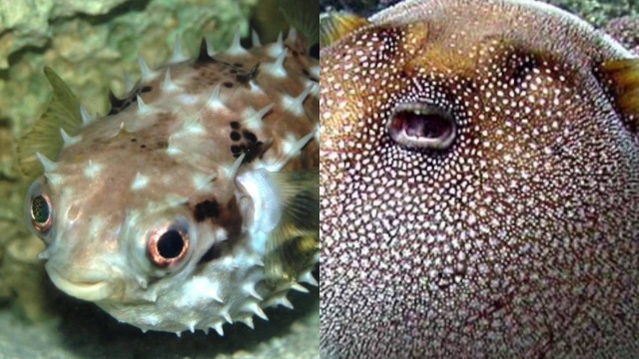
DIET:
Puffer fish and porcupine fish share similar omnivorous diets, primarily comprising crabs, mollusks, and algae. Their diet mainly consists of hard-shelled invertebrates, which they crush using their strong jaws and specialized teeth.
Although their dietary preferences overlap, specific species within each group may show differences in feeding behavior and prey selection based on factors such as habitat and availability of food sources
Size:
Pufferfish and Porcupine fish manifest significant variations among different species, with some being comparatively small and others reaching considerable lengths. Generally, pufferfish tend to be smaller than porcupine fish.
Full-grown puffer fish on average vary from just a few inches to several feet (1- 24 inches) in length, with species like the Dwarf Puffer being smaller and the Giant Puffer reaching considerable lengths. Similarly, Porcupine Fish normally range from six inches to over three feet long, giving hobbyists a range of options to choose from according to their preferences and tank size.
Predators:
Regardless of their intimidating appearance and defensive skills, pufferfish and porcupine fish are susceptible to predation by larger fish, sharks, and marine mammals. Their ability to inflate their bodies acts as a deterrent to some predators, giving them an impression of appearing larger and more difficult to swallow.
However, determined predators may still pose a threat, particularly if the fish is unable to inflate or escape. In their innate habitats, pufferfish and porcupine fish rely on disguise, rapid movements, and hiding behaviors to avoid being seen and escape from predators.
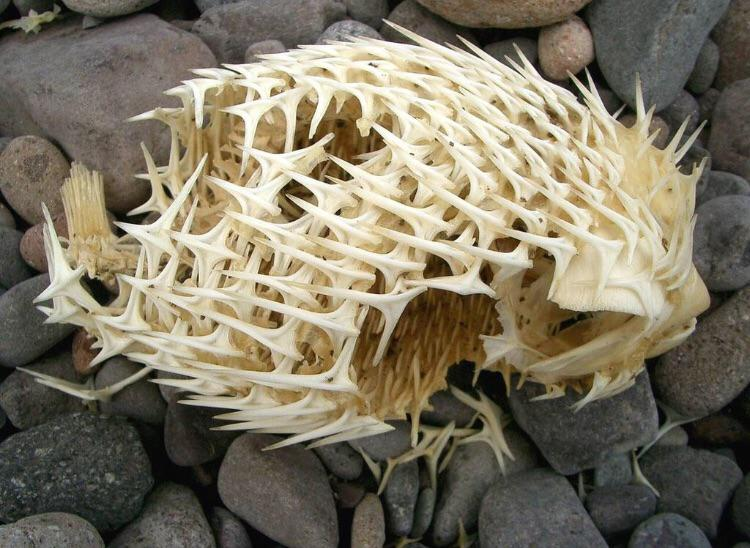
Life Span:
The life span of pufferfish, also known as freshwater blow fish and porcupine fish varies depending on species, environmental conditions, and individual factors. In captivity, these fish can live for several years with appropriate care and management. Some species have been known to reach ages of ten years or more under optimal conditions.
Care:
Caring for spiny pufferfish and porcupine fish requires careful attention to their dietary, environmental, and health needs. Hobbyists must ensure that factors like water parameters, including temperature, pH, and salinity remain consistent and fall within the recommended ranges for their species. Regular water changes, filtration, and substrate maintenance are essential for keeping the aquarium clean and minimizing stress on the fish.
Tankmates:
When choosing tankmates for porcupine puffer tankmates, compatibility is key to ensuring a balanced aquatic community. Both species can demonstrate territorial behavior and may become aggressive towards smaller or more docile tankmates.
It’s essential to select companions that share similar size, temperament, and environmental requirements to reduce conflicts and promote peaceful living.
Pufferfish can coexist with tetras, danios, rasboras, and bottom-dwelling fish such as Corydoras catfish, and loaches.
Like pufferfish, porcupine fish can coexist with peaceful fish such as mollies, swordtails, plates, and peaceful cichlids like angelfish or discus.

Breeding:
Both the puffer fish and porcupine fish typically lay adhesive eggs that adhere to surfaces in their preferred breeding habitats. Female porcupine fish release their eggs, which are fertilized externally by the male, often in shallow coastal waters or near coral reefs.
Conclusion:
Pufferfish and Porcupine fish share several remarkable similarities that make them appealing choices for hobbyists interested in marine aquariums. From their unique physical adaptations to their dietary preferences and habitat requirements, these species offer enthusiasts a rewarding and educational experience.
By understanding and accommodating their needs, hobbyists can enjoy the beauty and charm of these captivating creatures in their own aquatic environments.


